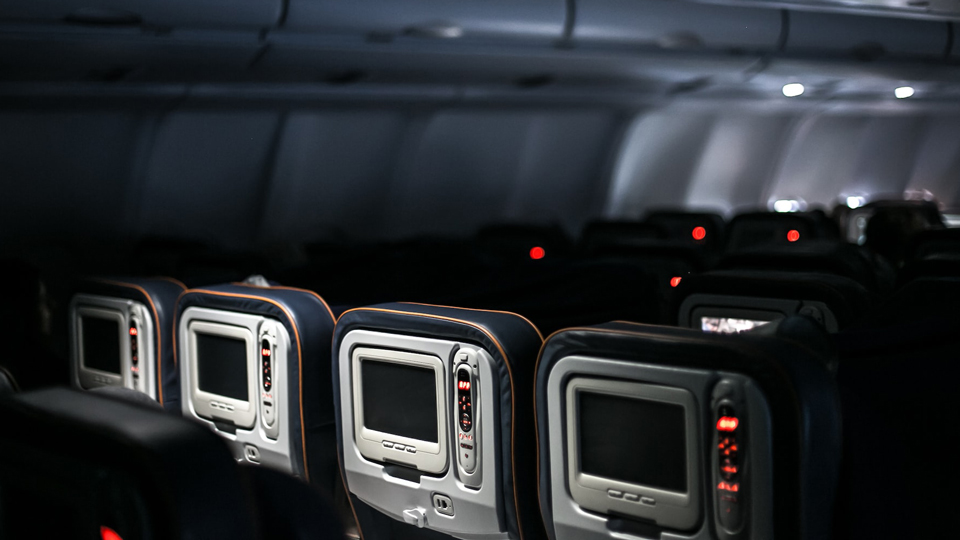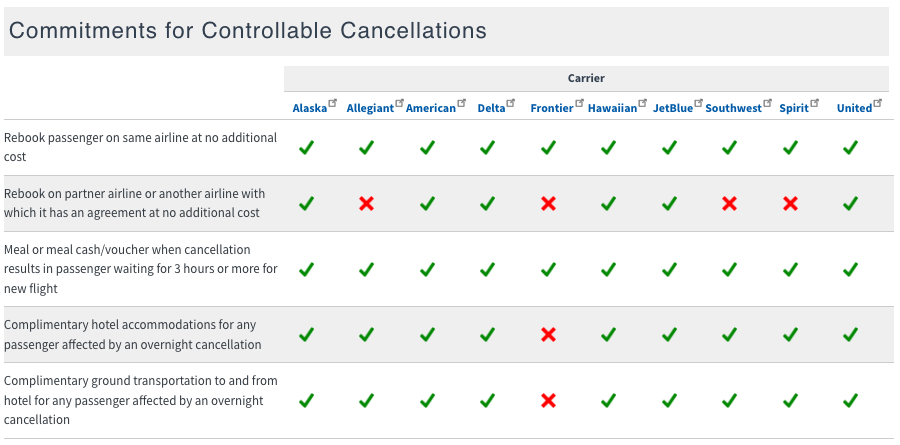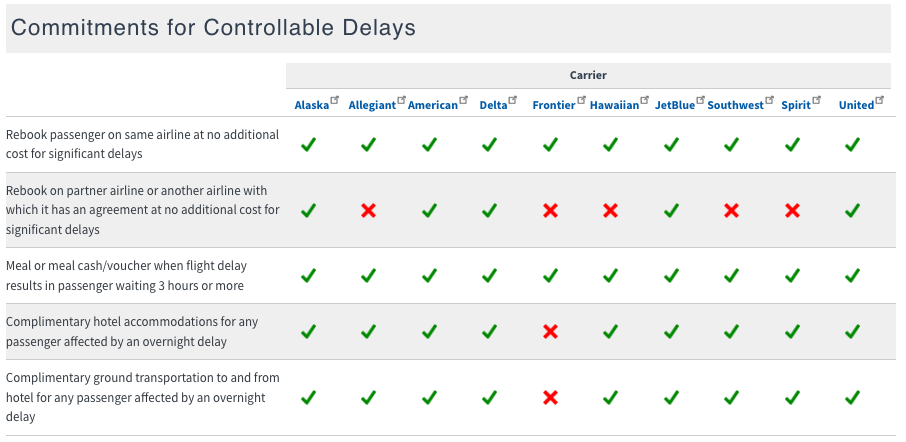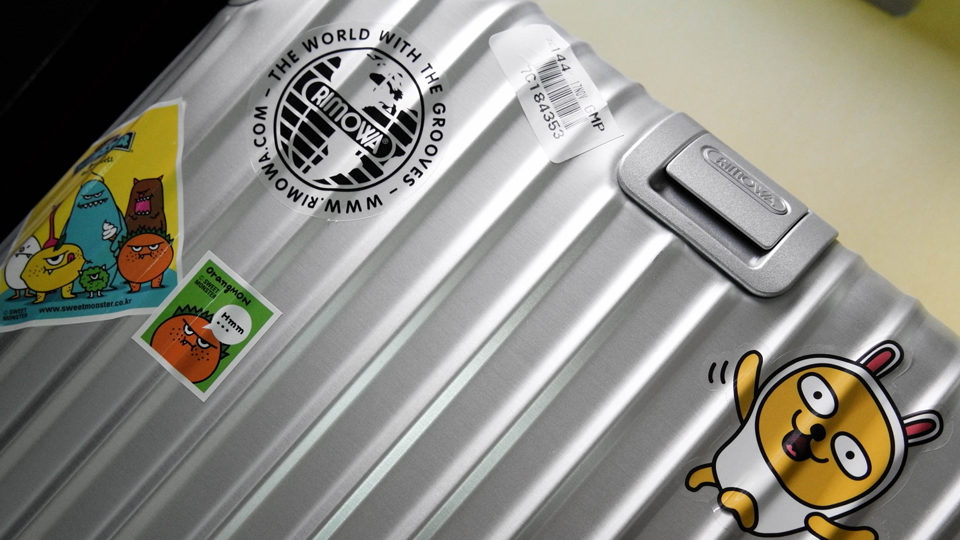
By “refund,” we mean an actual return to the original method of payment, and not a credit. Look there, actual money back in the bank.
In the majority of cases, a traveler is entitled to a refund back if the flight is canceled by the airline (not the other way around!), or is there a significant delay affecting the trip.
Travelers do have rights, though in the heat of the moment, it's often hard to tell what those rights are. However to get a refund, you will have to choose to not take the flight entirely.
(You can't take the flight, and get a refund too!)
If you don't choose to opt for a refund, each airline is also required by the DOT to provide specific commitments, which we will also provide here.
Basically, it all comes down to an airline’s contract of carriage, though, generally speaking, the odds are in your favor.
Getting refunds for canceled flights
In this case, if the airline cancels the flight, all travelers are entitled to a refund if they choose not to travel. (This is keeping in with the “trip-in-vain” rule very few travelers know about.)
Straight from the Department of Transportation:
If your flight is cancelled and you choose to cancel your trip as a result, you are entitled to a refund for the unused transportation – even for non-refundable tickets. You are also entitled to a refund for any bag fee that you paid, and any extras you may have purchased, such as a seat assignment.
If you choose not to opt for a refund, here are rights every traveler is entitled to:

Getting refunds for delayed flights
Luckily, the U.S. DOT is on the case of most travelers: "A consumer is entitled to a refund if the airline made a significant schedule change and/or significantly delays a flight and the consumer chooses not to travel."
The tricky part is the DOT doesn't define schedule change or significant delay, leaving this up to, well, personal interpretation or the airline's contract of carriage.
(However, if you were so delayed that you had to get overnight accommodation, that constitutes a significant delay. We think that qualifies.)
From their site:
DOT has not specifically defined what constitutes a “significant delay.” Whether you are entitled to a refund depends on many factors – including the length of the delay, the length of the flight, and your particular circumstances. DOT determines whether you are entitled to a refund following a significant delay on a case-by-case basis.
Generally, though significant delay will be dictated by the airline's contract of carriage.
|
Airlines |
Time Length |
| "Significant delay" is not defined; services/amenities are required for delays more than 3 hours | |
|
More than 4 hours |
|
|
More than 2 hours and/or causing traveler to miss a connection |
|
| "Significant disruption" is not defined, also does not specify refund for delays | |
| "Significant disruption" is not defined, but allows for refunds for delays | |
| "Significant disruption" is not defined, also does not specify refund for delays | |
|
"Significant disruption" is not defined |
|
|
"Significant delay" is not defined |
Either way, if you choose not to accept the refund, the airlines have made commitments to their passengers and the DOT.
Here's the infographic:

If you aren't offered a refund
There are things that you can do if you aren't offered a refund. The first step would be to file a complaint with the US Department of Transportation, and even though it won't solve anything, it will add another line of documentation in your defense.
If you’ve tried every step, a credit card dispute might be the next logical step, though nothing is guaranteed.
In addition to making the dispute, we'd suggest submitting the DOT complaint, this link to DOT policies, and a record of the delay along with the contract of carriage (if applicable).
Though taking pictures—and recording—delays at the gate isn't anybody's idea of fun, airlines have been known to been flub about it when seeing post-trip compensation. If you can't find a record of the delay, FlightAware tracks real-time flight delays.
Ready for the summer travel season, yeah?



